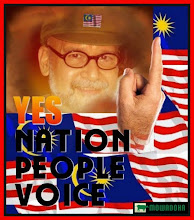Studio system still alive with Henry Jaglom
By Martin A. Grove
July 10, 2009, 02:45 PM ET
Henry Jaglom (Getty) ( above )
FILMMAKER FOCUS
Exclusive conversations with the industry's top directors and producers about the latest releases and trends in the feature film business.
There's little that's independent about indie filmmakers since they're dependent on distributors and financiers.
Exception: writer-director Henry Jaglom, whose 17th film "Irene in Time" is expanding after its mid-June L.A. launch.
Jaglom has achieved his own form of independence by recreating on a mini scale at his Rainbow Film Co. the studio system that prevailed in Hollywood's Golden Age.
 First, he's got an actress under contract, Tanna Frederick, (above ) whose career he's developing.
First, he's got an actress under contract, Tanna Frederick, (above ) whose career he's developing.He introduced her in his 2006 romantic dramedy "Hollywood Dreams" and now she's starring in "Irene."
They're already on their second three-year contract.
"In four years she's done three plays, two movies that have come out and a third that we've shot," he explained, referring to his upcoming "Queen of the Lot."
"I'm trying to find roles that excite what I think is her talent.
"That approach used to be routine in Hollywood.
"I'm in my David O. Selznick phase," is how Jaglom describes it.
When he discovered Tanna he thought, "Okay, I've been directing films for quite a while.
I've never wanted to do this before, but she has something magical -- but it needs a real push.
"Translation: She doesn't look like the kind of girl next door that studios sign for TV series.
Still, Jaglom says his reaction to Tanna's potential is what Selznick must have felt with Jennifer Jones or Ingrid Bergman.( below)
 "Irene" reflects Jaglom's love for 1940's movies "where there is some magical element of love beating time."
"Irene" reflects Jaglom's love for 1940's movies "where there is some magical element of love beating time." Hence, this romantic dramedy about a father who died early in the daughter's life and the daughter who can't find anyone able to fulfill the kind of love she felt from her father.
In the end -- there are multiple interpretations -- time is defeated as father and daughter are happily reunited.
Jaglom's putting his money where his mouth is to make Tanna a star.
Most filmmakers couldn't do that because they'd have to answer to a studio or to moneymen who'd complain she's not bankable.
"The financing has worked out for years from a very simple formula," he told me.
In the early '70s Jaglom went to Cannes where Francis Coppola ( below )was selling foreign rights to "The Conversation."

Above ( Francis and Sofia Ford Coppola as photographed by Annie Leibowitz )

"He was going around selling a film that didn't exist yet."
Jaglom was there with a 16mm print of his first movie, "A Safe Place," which had failed in the U.S., and saw how Coppola was raising money territory by territory.
Jaglom asked his actor friend Zack Norman, who'd raised the financing for his first three films and has appeared in Jaglom's movies ever since, "Why can't we just do this on a smaller level?
If Francis is getting $300,000 from Germany, maybe we can get $60,000 from Germany.
"He cobbled together a million bucks for his 1976 drama "Tracks."
"My films started getting awards and doing well at art cinemas in Europe," he recalled, but he "couldn't get anybody to come in America."
As his reputation in Europe grew, distributors started advancing him money: "I remember one contract was called Jaglom's Number 6, 7 & 8."
He's been following that pattern happily ever after.
Holding the line on budgets -- "Irene" cost a little over $2 million -- maintains Jaglom's filmmaking independence.
This way Jaglom can finance his movies by selling their foreign rights but still retain ownership of their negatives for the U.S. and other English-speaking countries.
He distributes his own pictures plus acquisitions (like the Monty Python films and the Oscar-winning doc "Hearts and Minds") through Rainbow.
That gives him a dependable stream of financing to support his modest budgets and to make films the way he wants to. Jaglom (hammering the point home):
"The way I want isn't the way studios would like it.
This keeps me in business because I don't have to go to anybody.

"Looking back he shares some sage advice from Orson Welles, ( above )his great friend and mentor:

"Looking back he shares some sage advice from Orson Welles, ( above )his great friend and mentor:
"The best thing about this is you have nobody looking over your shoulder."
No question Welles knew what that felt like.
Jaglom (sadly): "I think it was because I watched Orson and saw the way they made it impossible for him to make films in this town that I decided I'm never going to be dependent.
"Welles (to Jaglom over a long lunch):
"Never depend upon Hollywood to be your source of financing.
You do a couple of films that they're not going to like and you're going to be in trouble for the rest of your career.
"Ironically, Jaglom's approach is helping to keep the old studio system alive.
"In a mini-way," he suggests.
Jaglom loves reading Hollywood history and one of his favorites is the wonderful collection of Selznick's memos about how he produced classics like "Gone With the Wind," "Rebecca" and "The Third Man."

"His son, Danny Selznick, was at my screening last night," he told me, referring to "Irene's" premiere.
"He was saying something very nice about the film afterwards and I said, 'You know, if it weren't for your father, it wouldn't be occurring to me to be doing what I'm doing here.'"









No comments:
Post a Comment